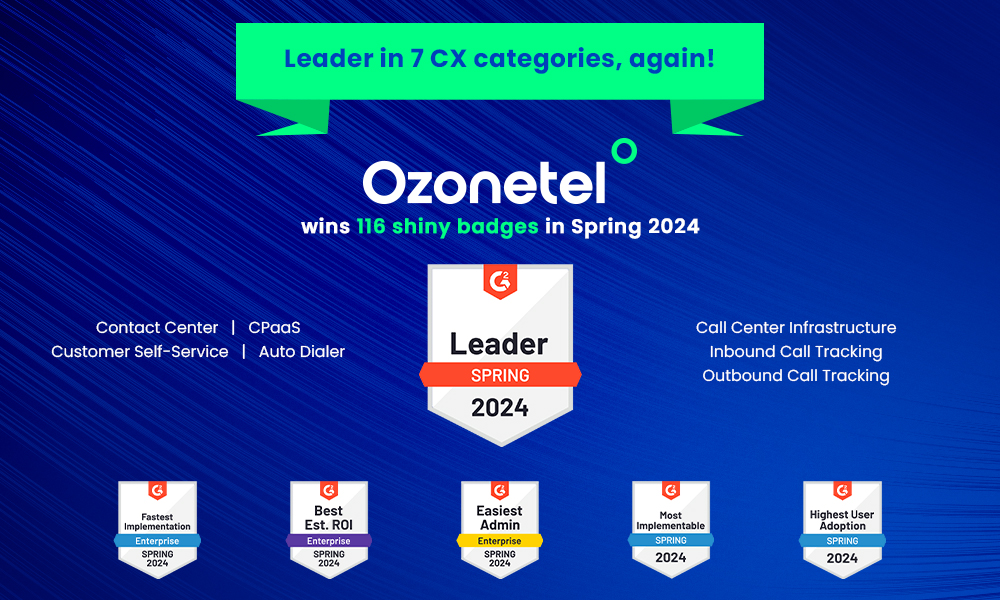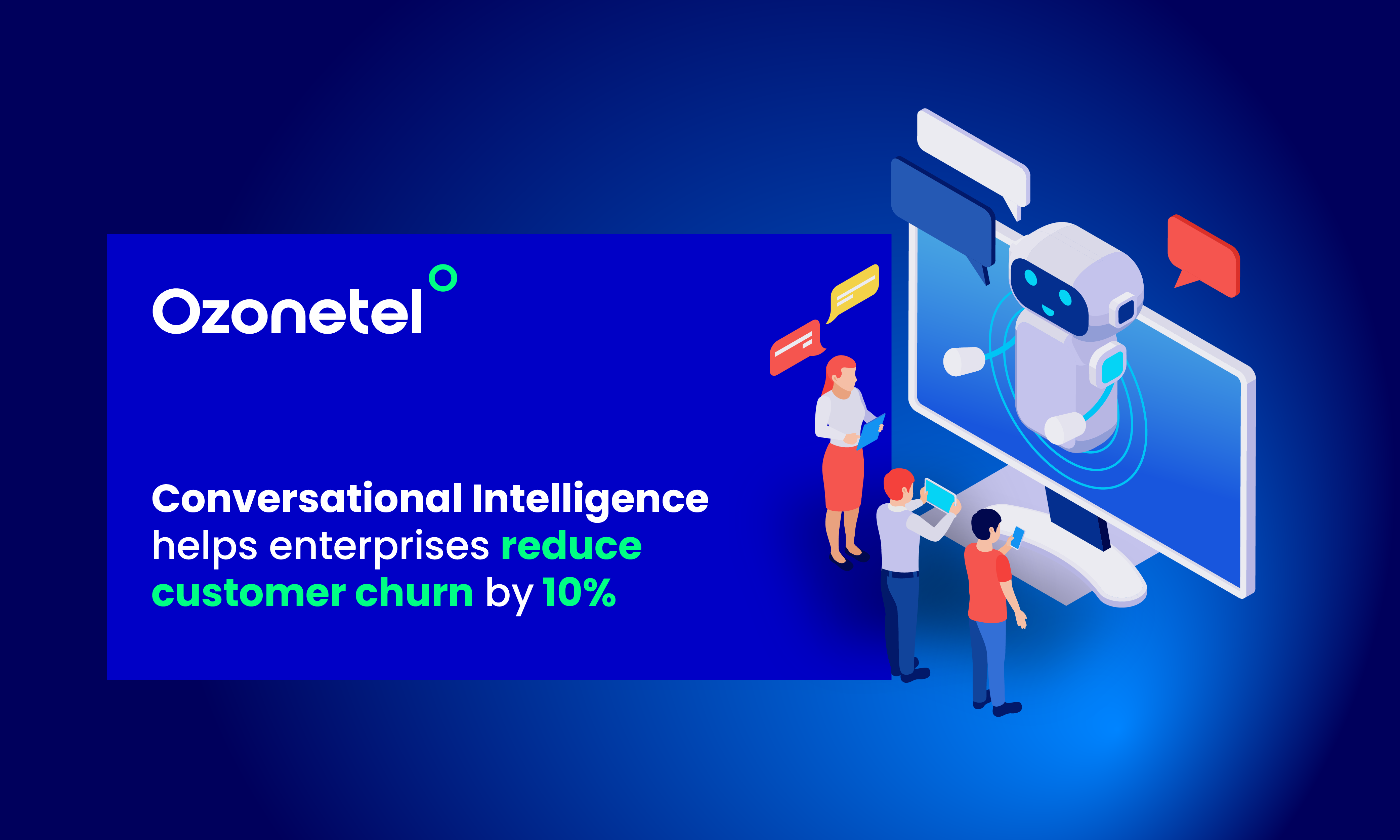- Resources
- A Comprehensive Guide to Digital Customer Journey
A Comprehensive Guide to Digital Customer Journey

Imagine walking into a nearby store where the staff knows your name, your needs, and preferences and assists you with personalized attention, it’s a place where you would preferably keep going back to. This level of service is what customers expect at every stage of their digital journey with a brand. They expect businesses to prioritize digital channels for interactions whether it’s browsing products, customer service, or transactions. The digital experience should be seamless and user-friendly.
But it is easier said than done. Less than 30% of large organizations rated any of their digital experiences as “good” or “very good” according to a recent study. Brands entering the digital realm often struggle with fragmented solutions and end up creating information silos. Challenges also arise in managing multiple vendors and relying on third-party AI platforms for data. Compatibility issues and data privacy concerns further hinder seamless data flow. All these issues directly impact personalization efforts and lead to a disjointed experience for customers.
So, how to overcome these challenges and ensure a seamless digital customer journey? It can be achieved by being available across channels and integrating all digital touchpoints, leveraging insights from millions of conversations to improve the user experience and establish meaningful connections with your customers.”
Read along as we discuss how to map your customer journey, identify roadblocks, and turn your customers into brand advocates.
In this article, we will explore:
- 1. What is the Digital Customer Journey?
- 2. What is a Digital Customer Journey Map?
- 3. Importance of Digital Customer Journey
- 4. Stages of Digital Customer Journey
- 5. How to Optimize Digital Customer Journey?
- 6. How to Create a Digital Customer Journey?
- 7. Data Collection with Digital Customer Journey Mapping
- 8. Tools for Digital Customer Journey
- 9. Examples of Digital Customer Journey
- 10. How Ozonetel Digital CX Solution Helps in Mapping Customer Journey
What is the Digital Customer Journey?
The digital customer journey involves the five steps that a consumer takes on their way to a conversion, such as a purchase. It includes all digital touchpoints where there is engagement, from initial curiosity in the product to contact with the brand and further down the route to purchase.
It’s crucial to understand that once the transaction is done, the journey continues to the ‘end’—this is where customer loyalty initiatives urge customers to buy from their company again in the future and refer others to their brand.
All of these consumer touchpoints are critical to a business since most customers must be exposed to and interact with a brand or product multiple times before deciding to click ‘buy.’ These touchpoints can include offline and online marketing activities, such as commercials, reviews, and word-of-mouth recommendations.
What is a Digital Customer Journey Map?
A customer journey map is a visual representation of a customer’s processes, wants, and perceptions across their interactions and relationship with a company. It helps you understand the steps customers take while interacting with your company, both those you see and those you don’t.
Here’s how you assess a journey map
Issues/opportunities: Assess the current client journey to identify areas for improvement and capitalize on growth opportunities.
Insights: Use the map to derive actionable insights. Look for patterns and trends that can help you improve the customer experience.
Optimization: Optimize budgets and efforts to implement changes aimed at enhancing the customer experience effectively and efficiently.
Alignment: Ensure the customer journey map and your business objectives are aligned to drive meaningful improvements and positive outcomes.
The ultimate purpose of journey mapping is to give your customers’ experiences a protocol and structure by leveraging all of the customer information and data you have available across your business.
An excellent customer journey map should demonstrate how customers discover, research, select, interact with, and even promote your products. Outlining all of your company’s interactions with its target audience is one of the simplest places to start.
Importance of Digital Customer Journey
The digital era has transformed consumer expectations, making a seamless digital customer journey crucial for businesses. Meticulously crafting these journeys allows companies to anticipate and capture evolving customer needs.
Also, by mapping the digital touchpoints, businesses gain invaluable insights into customer preferences, behaviors, and pain points. This empowers them to tailor strategies, products, and services accordingly, fostering strong connections and loyalty.
A few more points that emphasize the importance of digital customer journey are:
Improved Customer Experience
By identifying pain points, bottlenecks, and areas of friction in the customer journey, you can address them proactively and provide a smoother, more enjoyable experience for your customers. This enhanced experience leads to higher customer satisfaction and increased loyalty, ultimately driving business growth.
Targeted Marketing and Personalization
With a clear understanding of the stages customers go through, you can deliver more targeted and personalized content, offers, and messaging at each stage of their journey. This improved relevance increases the chances of conversions and strengthens the customer-brand relationship.
Consistency Across Channels
A customer journey map helps ensure a consistent brand experience across various digital touchpoints. This consistency builds trust and makes it easier for customers to navigate and interact with your brand, fostering a seamless and cohesive experience.
Data-Driven Decision-Making
Customer journey maps are based on data and insights from customer interactions, enabling a data-driven approach to decision-making. This ensures that your strategies and improvements are informed by factual information rather than assumptions, leading to more effective and impactful decisions.
Competitive Advantage
An optimized digital customer journey can provide a significant competitive advantage by offering a seamless and delightful experience that differentiates your brand from competitors, attracting and retaining customers in the process.
Stages of Digital Customer Journey
Every lead goes through several stages before becoming a loyal customer, and the better the experience at each stage, the more likely they are to stick around. By ensuring that your marketing, sales, and customer service teams focus on these five stages of the customer journey, you can create a seamless and satisfying experience for your customers.
Awareness Stage
This initial stage marks the moment when your target audience is getting to know about your brand’s or product’s existence. It could be discovering a new product flavor through an advertisement, a friend’s recommendation, or a social media post. Essentially, they are searching for information or a solution to a problem through social media, search engines, and other channels. This means that this stage is not the time for hard sells, and therefore you should focus on answering their questions and building trust.
Consideration Stage
Once a need has been identified, customers enter the consideration phase, where they actively research and evaluate potential solutions. During this critical stage, brands must employ tactics such as search engine optimization (SEO), email marketing campaigns, and sponsored content to showcase their unique value proposition and differentiate themselves from competitors. Engaging and informative content, coupled with compelling calls-to-action, can significantly influence a customer’s decision-making process.
Purchase Stage
If your brand successfully convinces customers during the consideration phase, they proceed to the purchase stage. Here, businesses must prioritize a frictionless and user-friendly experience across all touchpoints. Whether it’s a seamless e-commerce website, convenient payment options, or competitive shipping alternatives, even minor hiccups at this stage can lead to cart abandonment and lost sales. Continuously optimizing the purchase process through user testing, data analysis, and iterative improvements is crucial for maximizing conversion rates.
Retention Stage
The customer journey doesn’t end once a shopper makes their first purchase. Once a customer has made a purchase, the journey transitions to the retention phase. Brands must strive to maintain customer loyalty by providing exceptional customer service, offering additional resources, fostering online communities, and actively gathering feedback through surveys and other channels. The goal is to make customers feel valued and ensure their positive experience continues beyond the initial transaction, laying the foundation for repeat business and long-term brand advocacy.
Advocacy Stage
The ultimate stage is advocacy, where businesses aim to transform satisfied customers into fervent brand ambassadors. Through techniques like Net Promoter Score (NPS) surveys, companies can gauge customers’ willingness to recommend their products or services to others within their spheres of influence. Achieving this stage signifies a successful and enduring customer relationship, where customers become vocal proponents of your brand, driving organic growth and amplifying your marketing efforts.
How to Optimize Digital Customer Journey?
By carefully analyzing and enhancing every touchpoint along the customer’s journey, you can create a seamless, personalized experience that meets their unique needs and expectations. Here’s how you can optimize the digital customer journey:
Personalization
One of the most effective ways to optimize the digital customer journey is through personalization. By leveraging customer data, you can deliver a customized experience tailored to each customer’s unique needs and preferences. This can involve personalizing the content they see on your website, sending targeted email campaigns, or offering personalized product recommendations.
To implement personalization effectively, gather and analyze customer data from various sources, such as website interactions, purchase history, and social media engagement. Use this data to create detailed customer profiles and segment your audience based on their interests, behaviors, and preferences. Then, use this information to personalize the content, messaging, and offers they receive, ensuring relevance and value at every touchpoint.
Customer Relationship Management (CRM)
Implementing a comprehensive Customer Relationship Management (CRM) system is crucial for optimizing the digital customer journey. A CRM system enhances user experience and customer satisfaction by managing customer interactions throughout their journey with your brand.
Within the CRM system, collect and analyze customer data to gain insights into their behavior, preferences, and needs. Use these insights to personalize the digital experience, improve customer engagement, and foster lasting relationships. Additionally, a CRM system streamlines operations and boosts efficiency by automating routine tasks, such as email marketing and customer record updates.
Ensure that your CRM system integrates seamlessly with your existing systems and provides adequate training and support to your staff for effective utilization.
Mobile Optimization
With the rise in smartphone and tablet usage, optimizing for mobile is essential for delivering a seamless digital customer experience. Ensure that your website is mobile-friendly, with easy navigation, fast loading times, and a responsive design that adapts to different screen sizes.
Additionally, consider developing a mobile app to offer a more personalized and engaging user experience. Leverage features like push notifications, location services, and AI technology to provide tailored content and offers to your customers. However, ensure that your app provides a consistent and seamless experience across all devices.
How to Create a Digital Customer Journey?
By understanding and optimizing the various touchpoints where customers interact with your brand online, you can enhance their experience, foster loyalty, and drive success. Here’s how you can create an effective digital customer journey:
Remember, the digital landscape is constantly evolving. Regularly review and update your customer journey map to reflect changes in customer behavior, technology, or business strategies. Iteration is key to keeping your journey map relevant and effective.
Data Collection with Digital Customer Journey Mapping
Optimizing the digital customer journey requires a deep understanding of your customers’ behaviors, preferences, and interactions with your brand. To achieve this, you need to collect and analyze data from various touch points along the customer’s journey. By leveraging the following data, you can gain valuable insights and make informed decisions to enhance the overall customer experience.
- Web-browsing Data: Track customer activity on your website, including pages visited, content engaged with, devices used, and navigation paths. This data helps optimize website experience.
- Mobile App Data: Collect user profiles, sign-in information, location data, and in-app behavior from your mobile app users. Allows for personalization and location-based services.
- Sales Data: Analyze purchase history, shopping habits, abandoned carts, and missed sales opportunities. Helps identify friction points and areas for improvement.
- Advertising Data: Track customers who click through from advertisements and measure ad campaign effectiveness. Combine with sales data for optimization.
- Loyalty Data: Gain insights into behaviors, preferences, and engagement levels of your loyalty program members. Identify valuable customer segments.
- Survey Data: Gather direct customer feedback through surveys at various touchpoints. Helps identify pain points and areas for improvement.
- Social Media Listening: Monitor customer sentiment, trends, and brand perception on social media platforms. Informs social media and broader marketing strategies.
- Aftersales Data: Analyze customer service data to understand product quality, delivery issues, and areas requiring support. Optimize post-purchase experience.
Tools for Digital Customer Journey
As customers interact with companies through various touchpoints, both online and offline, it’s essential to have the right tools to map, analyze, and improve these journeys. Fortunately, there are several powerful platforms available that can help you achieve this.
Customer journey mapping tools provide features like real-time collaboration, data integrations, intuitive interfaces, and advanced analytics, enabling you to gain valuable insights and make data-driven decisions to enhance the customer experience.
UXPressia
UXPressia is a cloud-based customer experience management platform that helps teams visualize, share, present, and improve their customer journeys. One of its standout features is real-time online collaboration, allowing multiple users to work together seamlessly. It also offers integrations with a variety of data sources, ensuring that you have access to all the relevant information. The modern interface with an intuitive drag-and-drop environment makes it easy to create and customize customer journey maps.
InMoment
InMoment is a platform that allows you to consolidate data from various feedback channels into a cohesive set of customer data that everyone in the organization can access and utilize. Users can create visualizations of customer touchpoints and interactions within the customer journey. The platform includes three Journey Mapping engagement levels, each offering different services and capabilities. This allows you to choose the level that best suits your organization’s needs and scale as necessary.
Qualtrics
Qualtrics is an Experience Management software that offers solutions for customer experience, employee experience, and research. Recently, they strengthened their Voice of the Customer feedback tool by acquiring the popular software Clarabridge. This AI-powered solution provides valuable listening insights and can detect emotion and intent, giving you a deeper understanding of your customers’ sentiments and motivations.
FigJam
FigJam is a whiteboard tool developed by Figma, designed to make brainstorming, ideation, and mapping out customer journeys more collaborative and efficient. It’s interactive and offers a real-time element that makes it feel like you’re all working in the same room, even if you’re miles apart. Also, the sticky notes feature allows you to jot down ideas, move them around, and group them together, while the drawing tools enable you to sketch out ideas, create diagrams, and even add emojis.
Smaply
Smaply is a customer journey mapping application that allows you to create customer personas, journey maps, and system maps. With this tool, you can create journey maps for numerous personas and view them in detail, helping you make better decisions about your various types of customers. Smaply also enables you to export projects as PDF, Excel, or HTML, making it easy to share and collaborate.
Examples of Digital Customer Journey
When creating a customer journey map, you need to carefully consider your business and the client experience. On that note, let’s look at some real-world customer journey mapping examples and dig into the results they achieved:
Deltin Royale
Deltin Royale, Asia’s largest offshore casino, leveraged the digital and GenAI-powered solutions provided by Ozonetel and GAN.AI to develop a hyper-personalized video featuring Tamannaah Bhatia, their brand ambassador. Through the video, they extended exclusive invites for the ‘Deltin Star Weekend’ event. This approach reactivated 16% of their dormant customers and achieved a 5X improvement in open rates.
Outcome:
- Successfully reactivated 16% of dormant/inactive patrons
- Achieved a 5X improvement in open rates (video views)
- Secured 100% Booking
- Achieved a 3X increase in revenue due to a wider reach and hyper-personalized engagement
BigBasket
BigBasket, a leading online grocery platform, implemented a GenAI solution to analyze customer conversations in real-time. They used our solution to
- Identify frequent issues & key areas of concern for their customers
- Analyze sales scripts and identify customer objections that impact sales
- Automate entry of conversation summary in CRM and CX tool
- Improve CX with faster & better resolution of complaints.
Outcome
- Revenue impact: 5% improvement in sales.
- Wallet share: 1.5X improvement in order value.
- LTV: 20% improvement in repeat orders.
Muthoot
Muthoot, a diversified NBFC, aimed to showcase their jewelry line without physical stores. Leveraged CCaaS Platform for WhatsApp to instantly deploy digital jewelry catalogs on chatbots to customers and created right ambience solely through digital channels while they enabled payments and sizing at the branch offices. Voice bots were used to send payment reminders, freeing up agent for more complex roles.
Outcome
- Over 200,000 WhatsApp impressions were generated.
- The average order value increased by 2.5 times.
- Digital channels facilitated 80% of pre-purchase research.
How Ozonetel Digital CX Solution Helps in Mapping Customer Journey
Ozonetel’s Digital CX Solution provides a GenAI-powered, low-code tool enabling seamless mapping and design of customer journeys. The CX solution suite empowers prioritization of customer experience over rule-based engagement, ensuring personalized and meaningful interactions at every touchpoint.
To give you an example, when a customer initiates contact, our platform orchestrates a sequence of interactions—sending follow-up emails, triggering SMS notifications, and routing inquiries to the right department. By visualizing and optimizing these journeys, companies can enhance engagement, retention, and satisfaction.
Omnichannel Journey
With Ozonetel, you can create omnichannel customer journeys that span across voice and digital channels. Whether your customers prefer to interact via phone calls, WhatsApp, SMS, email, web chat, or social media platforms like Twitter and Facebook, you can design cohesive journeys that cater to their preferences. For instance, you can orchestrate a journey where a customer initiates a conversation on WhatsApp, escalates to a voice call if needed, and then receives a follow-up email or SMS, all while maintaining context and continuity.
Drag and Drop Builder
The intuitive drag-and-drop interface enables you to design customer journeys visually, without the need for coding. You can easily map out the desired flow, incorporating various touchpoints, decision points, and actions based on customer behavior or preferences. This no-code approach allows you to rapidly prototype, iterate, and deploy customer journeys, ensuring agility and responsiveness to changing market dynamics or customer needs.
Deep Insights & Analytics
Leverage our AI capabilities to use insights gathered from millions of digital conversations. These analytics go beyond surface-level observations, providing a holistic view of customer experiences. Contextually, they reveal patterns in customer behavior, guiding the development of targeted marketing campaigns & root cause of dissatisfaction. Organizations can identify pain points, optimize touchpoints, and refine strategies.
AI and NLP Integration
Our solution is embedded with AI and Natural Language Processing (NLP) capabilities, allowing you to create intelligent and contextual journeys. The platform can analyze customer interactions, understand intent, and adapt the journey accordingly.
For example, if a customer expresses frustration or dissatisfaction during a chat conversation, the journey can dynamically escalate to a human agent or offer personalized recommendations to resolve the issue promptly.
Seamless Integration
Our solution suite seamlessly integrates with third-party systems, such as CRM, ERP, helpdesk, and other enterprise applications. This integration enables you to leverage customer data, historical interactions, and relevant context from these systems to deliver personalized and contextualized journeys. For instance, if a customer has an open support ticket, the journey can automatically incorporate details from the ticketing system, ensuring a seamless and informed experience.
Conclusion
The digital customer journey encompasses the entire process a user undergoes when interacting with your brand, from initial discovery to advocacy, spanning across five critical stages: discovery, consideration, purchase, retention, and advocacy. Touchpoints, which are the various points of customer contact throughout this journey, play a pivotal role in shaping the overall experience.
Ultimately, the success of your company hinges on the optimization of your digital customer journey, as the customer’s process is just as relevant as the purchase itself. To achieve great customer experiences, leveraging a powerful customer experience management platform like Ozonetel’s Digital CX Solution becomes indispensable.
With its AI-enabled Customer Journey Studio, omnichannel capabilities, and seamless integration with third-party systems, you can design and deliver personalized, contextualized journeys that transcend traditional rule-based engagement.
Transform Your Customer Journey Strategy Discover how digital transformation can elevate your customer journey.
Frequently Asked Questions
Digital customer experience refers to the overall impression and interaction a customer has with a brand through digital channels such as websites, mobile apps, social media, and email. It encompasses every touchpoint and interaction, from initial awareness to post-purchase support.
Mapping a digital customer journey involves analyzing and visualizing the various stages and touchpoints that a customer goes through when interacting with a brand online. This process typically includes identifying key milestones such as awareness, consideration, purchase, and advocacy, as well as mapping out the different channels and devices used at each stage.
The concept of a digital customer refers to an individual who engages with a brand or organization primarily through digital channels. These channels usually include websites, mobile apps, social media platforms, and email. Digital customers may browse products online, make purchases through e-commerce platforms, seek customer support via chat or email, and interact with brands through various digital touchpoints.
Prashanth Kancherla
Chief Operating Officer, Ozonetel Communications
Over the past decade, Prashanth has worked with 3000+ customer experience and contact center leaders...
Chief Operating Officer, Ozonetel Communications
Over the past decade, Prashanth has worked with 3000+ customer experience and contact center leaders to comprehensively understand the need for effective and efficient customer communications at every step of their journey with a brand. Deeply embedded in today’s CCaaS ecosystem, he has been instrumental in Ozonetel's growth and contributed in various roles including product management, sales, and solution architecture.







